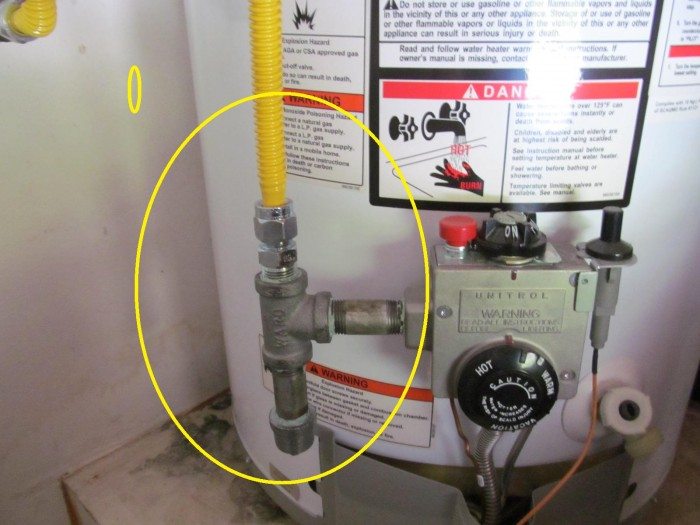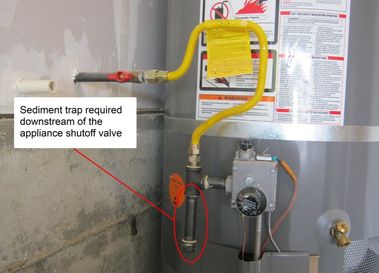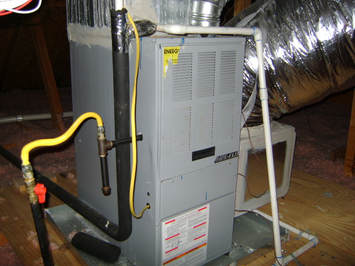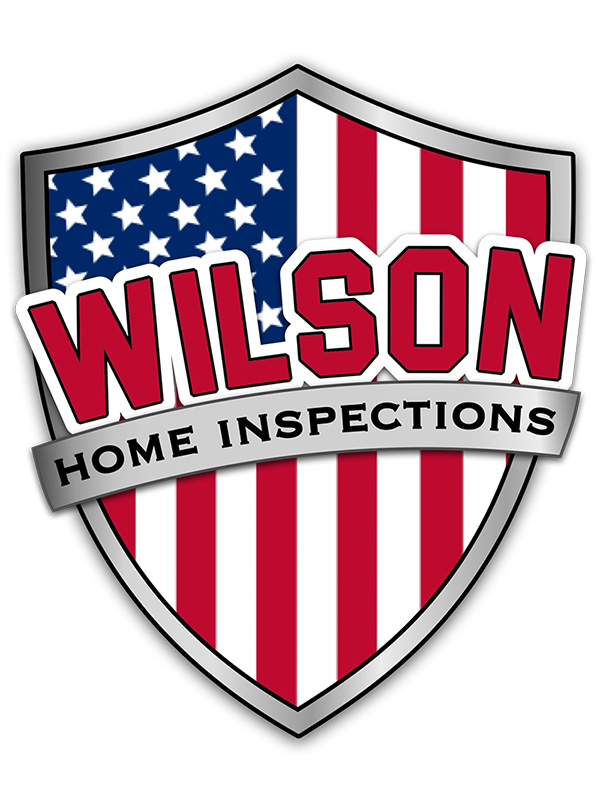Have you ever looked at your gas furnace or gas water heater and wondered what the short piece of gas pipe going to nothing was for? Did the plumber possibly leave it in case you wanted to add to the line? It is actually a very useful component of the gas line known as a sediment trap.
 Sediment traps installed at gas appliances are used to help catch any sediment or debris that may be present in the gas line and prevent it from entering the appliance and possibly damaging it. This could be things such as metal shavings from pipe cutting and threading during gas line installation at the home or dirt that may have gotten in to the line from utility crews installing gas mains underground. Some other names people have used for sediment traps include “drip leg”, “drip tee”, and “dirt leg”.
Sediment traps installed at gas appliances are used to help catch any sediment or debris that may be present in the gas line and prevent it from entering the appliance and possibly damaging it. This could be things such as metal shavings from pipe cutting and threading during gas line installation at the home or dirt that may have gotten in to the line from utility crews installing gas mains underground. Some other names people have used for sediment traps include “drip leg”, “drip tee”, and “dirt leg”.
Let’s look at what the code says about sediment traps:
“Where a sediment trap is not incorporated as part if the appliance, a sediment trap shall be installed downstream of the appliance shutoff valve as close to the inlet of the appliance as practical.”
We can see an example of this in the picture below.

The code also specifies some locations where sediment traps are not required: illuminating appliances (appliances that have a flame that is clearly visible during operation), ranges, clothes dryers, decorative vented appliances for installation in vented fireplaces, gas fireplaces and outdoor grills. The orientation of the sediment trap is also important. It must be vertical to function properly. We can see an improper horizontal installation below.

I frequently see appliances required to have sediment traps that aren’t equipped with them. I find it odd since sediment traps have basically always been required. I even find them missing during new construction inspections. Apparently, not all installers and municipal inspectors are concerned with whether they are present or not. To be honest, I am not overly concerned with their presence either. However, I will note the lack of a sediment trap in the report.
If you look at your own appliances or a thorough home inspection report and see that there are missing sediment traps, don’t be alarmed. Just consider having one installed the next time the unit is serviced or replaced. If you don’t have the issue corrected, it isn’t the end of the world. Think of a sediment trap as a cheap form of insurance for your gas appliances.


